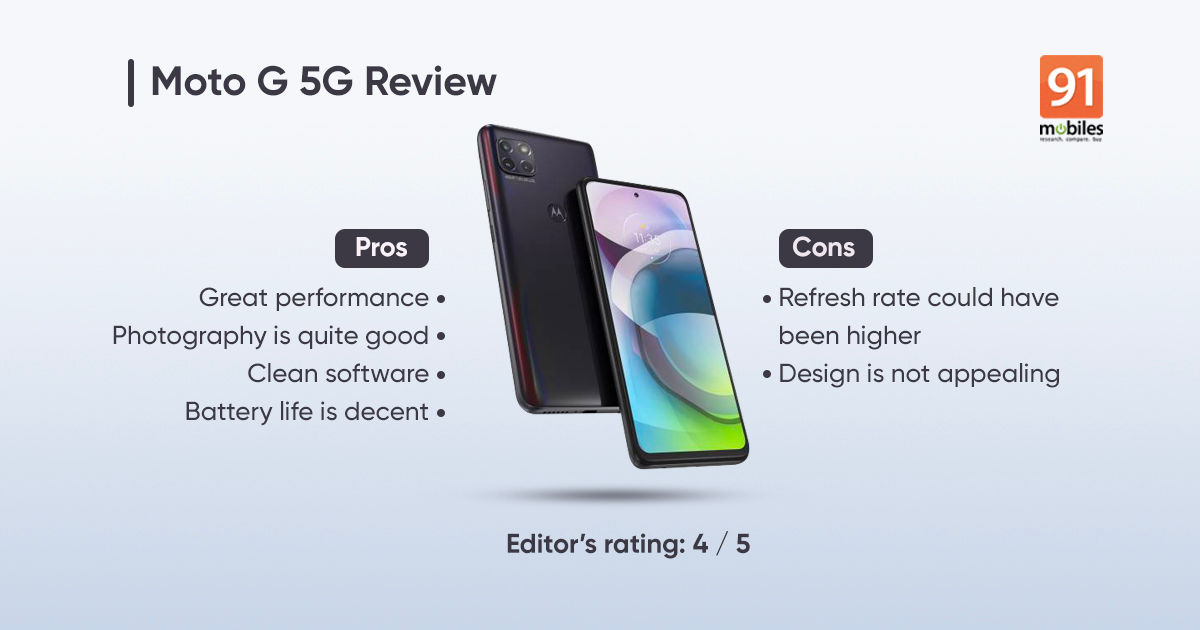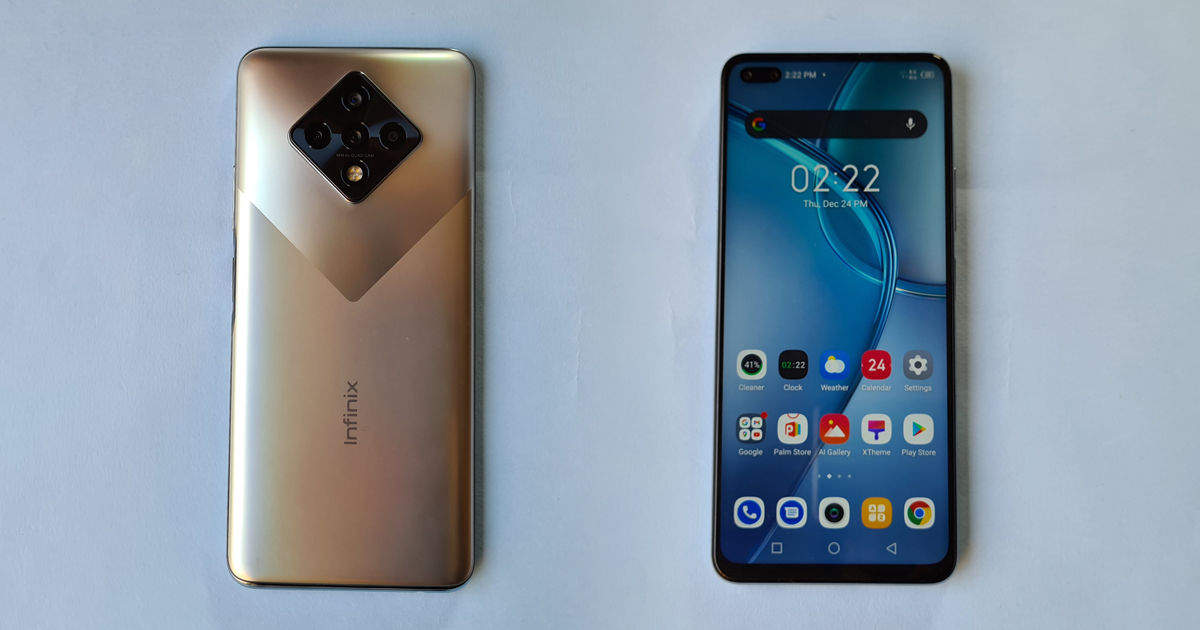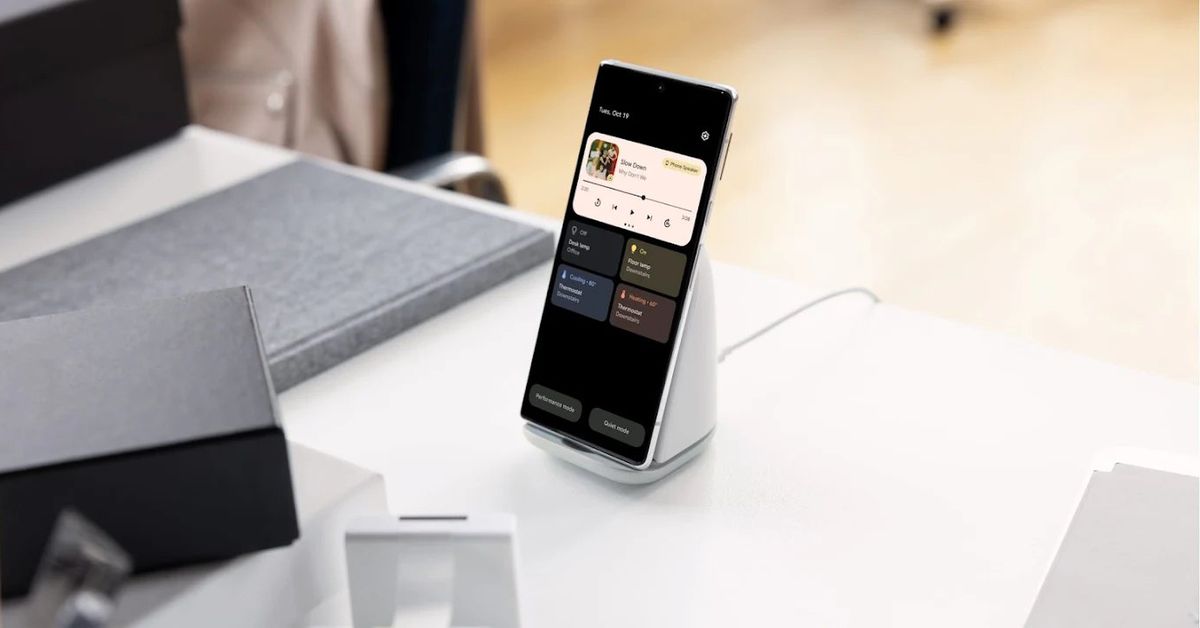Xiaomi Mi 11 Ultra review: David vs Goliath

Xiaomi has been eying the premium segment of smartphones for a hot minute now, which at present, is dominated by Apple, Samsung, and to some extent, OnePlus – at least in India. While some would argue against paying big bucks for premium Xiaomi handsets, the veteran smartphone OEM is betting big on its new roadmap, which kicked off with the launch of the Mi 10 series of phones last year. Interestingly, Xiaomi omitted the flagship Mi 10 Ultra from last year’s lineup but, it looks like the gloves are finally off as the company recently announced the Mi 11 Ultra alongside the Mi 11X and the Mi 11X Pro in India.
Backed by the latest Qualcomm processor, a top-tier camera setup with 120X zoom, and a stunning display, the Mi 11 Ultra offers buyers everything but the kitchen sink and has been priced rather attractively too. So, does the Mi 11 Ultra mark a triumphant win over the Samsung Galaxy S21 Ultra (review), and the OnePlus 9 Pro (review)? Or is the phone too good to be true? Stay tuned, as I try to answer that in my full review.
Table of Contents
Verdict
The Xiaomi Mi 11 Ultra is simply put, the most complete flagship out there. The handset ships with a stupendously fast processor, a stunning display, and an impressive camera stack. Rest assured, the smartphone should be at the top of your wishlist if you’re on the hunt for a premium flagship.
Design
I won’t beat around the bush at all – the Xiaomi Mi 11 Ultra’s design is quite polarising and for good reason. On one hand, the handset feels superbly premium and robust, thanks to its ceramic back which sets it apart from the herd of other glass/metal back phones in the market. On the other hand, the smartphone’s camera bump bulges out to almost the same girth as the phone’s chassis and spans across the smartphone’s width too. Now, although the design takes me back to the Nexus 6P days, I wouldn’t blame you for thinking the camera bump sticks out like a sore thumb.
To the company’s credit, the camera module does house three big sensors, along with a secondary 1.1-inch OLED screen which understandably, takes some space too. What’s more, seeing how the module spans the width of the phone, the Mi 11 Ultra’s chassis doesn’t wobble when placed on a flat surface either. But that doesn’t take away from the fact that the smartphone’s super-sized camera bump might not be up everyone’s street. In particular, the handset ergonomics leave a lot to be desired and while the Mi 11 Ultra feels extraordinarily luxurious to hold, the handset’s sheer size and heft (234g) will indubiously burden your wrists. Add to that the unit’s slippery frame and you’ll have to have nerves of steel to use the phone without a protective case.
Disappointingly enough, despite its towering chassis, the Mi 11 Ultra doesn’t ship with a headphone jack. That being said, the company has procured high-res certification for both wired and wireless audio and has even bundled a 3.5mm adapter with the retail packaging to appease audiophiles. Moreover, the handset ships with – what is in my opinion – the loudest-sounding stereo speaker setup I’ve tested to date. Xiaomi even roped in audio experts from Harmon Kardon to finetune the pair’s output and sure enough, the audio relayed through the speakers sounds rich, offers utmost clarity, and is void of any distortion even at high volume levels.
The Xiaomi Mi 11 Ultra’s haptics, along with the smartphone’s speedy biometrics are feathers in the phone’s cap too. As someone who drafts lengthy emails on their phone on a daily, I was in awe of the Mi 11 Ultra’s tight and concise haptic feedback. The in-display fingerprint sensor worked like a charm too and the unit was noticeably more accurate than the one on the Samsung Galaxy S21 Ultra. The same goes for the smartphone’s facial recognition software, which got me into my home screen the second I picked up the phone. And, despite positioning the smartphone in the premium segment, the company has taken a page from its affordable offerings and has furnished the Mi 11 Ultra with an IR blaster too. Consequently, you should be able to control most, if not all electronic items at your place with the phone.
Make no mistake – the Xiaomi Mi 11 Ultra is a pricey proposition and the company has enveloped the smartphone in Corning’s Gorilla Glass Victus to best protect your investment. Furthermore, the handset also comes with IP68 certification, making it impervious to damage from water or moisture.
Displays
Smartphone OEMs constantly try to one-up each other, routinely leading to spec wars, and sometimes paving the way for bizarre innovations. Case in point – the Xiaomi Mi 11 Ultra’s secondary display which is nestled within the smartphone’s rear camera module. The 1.1-inch OLED screen serves a handful of different purposes and can be used as a viewfinder to click selfies from the rear cameras, as well as show the time and notifications. In practice, the screen felt quite restrictive, to the point where I would consider it a gimmick.
For one, the smartphone already ships with an Always-on Display for the primary screen that offers better legibility and keeps the main screen scratch-free as the panel need not be in direct contact with the surface. Secondly, it’s quite difficult to frame a shot on the secondary screen, especially when the phone is at an arm’s length.
Thankfully, the smartphone’s primary screen is nothing short of remarkable. The 10-bit display measures in at 6.81-inches, offers QHD+ resolution, and refreshes at 120Hz as well. What’s more, the unit boasts a peak brightness of 1,700 nits, and is compliant with HDR 10+ standard as well, meaning you will be able to stream your favourite TV shows from various OTT platforms at the highest quality possible. The display ships with a tiny punch hole notch too, keeping distractions to a minimum whilst consuming content on the phone, which is great.
Much like most other Xiaomi phones, the Mi 11 Ultra also offers a slew of customisation options that you can use to tweak the display’s colour temperature. Upon boot, the colour profile will be set to Auto, but I noticed that the panel outputted the most natural colours in sRGB mode, which can be found under the advanced display settings. You’ll also get a dedicated dark mode here which works as advertised albeit mucks up the UI for a handful of apps like Snapchat and Amazon. Thankfully, you can disable dark mode for individual apps on the Mi 11 Ultra, so no harm, no foul.
I’d also like to touch upon the panel’s 120Hz refresh rate which paves way for buttery smooth UI animations. Moreover, much like the Samsung Galaxy S21 Ultra, the Xiaomi Mi 11 Ultra also lets users enjoy 120Hz refresh rate even with the display resolution set to QHD. And, when running the Display Checker utility in tandem with other apps, I noticed that the handset maintained its 120Hz refresh rate across most apps, barring YouTube and Netflix, wherein the screen defaulted to 60Hz. In addition, the panel also supports a touch sampling rate of 480Hz which when paired with the screen’s accommodating size, should elevate a user’s gaming experience too.
Cameras
The Mi 11 Ultra’s claim to fame is its camera setup and here, Xiaomi has really outdone itself. So much so, I am going to go out on a limb and say that the Xiaomi Mi 11 Ultra has the best camera setup on any Android phone, period. The icing on the cake is that the smartphone costs much, much less compared to say, the Galaxy S21 Ultra and despite that, outshines its rivals admirably.
Ironically, Xiaomi has opted for Samsung’s flagship 50MP ISOCELL GN2 sensor which, for the uninitiated, is the biggest camera sensor on any phone to date and offers a 1/1.12″ unit with a pixel size of 1.4 micrometers. In contrast, the Samsung Galaxy S21 Ultra ships with a 108MP unit, though the sensor, as well as the individual pixels are notably smaller at 1/1.33″ and 0.8 micrometers respectively. Consequently, the Mi 11 Ultra’s main sensor can let in more light which results in higher-quality images.
I snapped some comparison shots from both, the Mi 11 Ultra as well as the S21 Ultra, which should help you better understand the differences in the duo’s image quality.
In daylight scenarios, the Mi 11 Ultra schools Samsung’s offering, and the shots from the Xiaomi phone exhibited significantly higher details and at times, better dynamic range too. This is evident from this first shot of the apartment complex. Here, at a closer crop, the Mi 11 Ultra’s photo exhibits better details on the tree bark towards the front of the frame, as well as on the convex mirror which is positioned further back. What’s more, the shrubs along the walkway are void of any noise on the Mi 11 Ultra’s photo, albeit suffer from grainy-ness on the Galaxy S21 Ultra’s shot.
In a similar fashion, the Mi 11 Ultra captured the opposite side of my apartment complex better too, with the smartphone’s composition yielding superior corner details as compared to the S21 Ultra’s shot. The same is evident if you zoom in and pan towards the backup generator, which retains its sharpness in the Mi 11 Ultra’s shot, albeit appears hazy in the S21 Ultra’s photo.
Turn the page over to this next shot of a pink building and you’ll notice the same thing all over again – the Mi 11 Ultra’s photo exposes shadows much better, offers superior sharpness, and maximizes the details in a composition.
The scenery remains unchanged when I compared the photos from the Mi 11 Ultra and S21 Ultra’s wide-angle sensor. Now, credit where credit’s due – the S21 Ultra’s colour science is relatively more consistent across its different camera sensors. However, the images from the smartphone’s ultra-wide angle lens appear over-sharpened at a closer crop. On the other hand, the Mi 11 Ultra’s output, albeit not as color-accurate, offers significantly higher details across the board. Of course, the two smartphones come with incredible zoom capabilities too, and here, I noticed that the output from the S21 Ultra was a tad more appealing to the eyes. Although the details were more or less the same across the 3X, 5X, and 10X shots I captured from the two phones, the colours were noticeably better on Samsung’s offering.
In terms of low light, the Mi 11 Ultra shows its true might and clicks noticeably clearer images than the competition. For instance, in the shot of my living room, the Mi 11 Ultra’s larger sensor managed to squeeze in more details which can be seen if you zoom into the cushions or the curtains in the background. Similarly, the lowlight shot of the buildings netted superior details on the Mi 11 Ultra’s photo, and the sensor-controlled the noise and lens-flaring well too. I can go on and on, and present you with more camera samples from the two phones but to cut a long story short, the Galaxy S21 Ultra cannot hold a candle to the Mi 11 Ultra’s main sensor in most scenarios.
As for selfies, the Xiaomi Mi 11 Ultra’s 20MP front-facing sensor clicks serviceable images too. That said, those looking to capture higher-quality selfies can always default to using the phone’s rear cameras. For videos, the Xiaomi Mi 11 Ultra is capable of shooting footage in up to 8K resolution, which, needless to say, is overkill for most users. However, the phone’s 1080p60fps footage looked stellar with ample stability, good dynamic range, and vibrant colours.
Performance, Software, and Battery Life
No surprises here, the Xiaomi Mi 11 Ultra ships with Qualcomm’s cream of the crop, Snapdragon 888 processor. The SoC has been paired with 256GB of built-in, non-expandable UFS 3.1 storage and 12GB of LPDDR5 memory. Unsurprisingly, the Mi 11 Ultra will seldom leave you wanting for more horsepower and the handset felt stupendously fast during my stint with it – apps opened quickly, games ran at the highest possible preset without any issues and the handset outputted incredible scores in benchmarking apps too. In Antutu Benchmark, the handset outputted a score of 7,83,751 points in the first run, which speaks volumes about the device’s computing prowess. Furthermore, the handset scored 1,101 and 3,383 points in GeekBench’s single-core and multi-core tests too, which is on par with competing flagships as well.
Now, interestingly, the smartphone did get quite warm whilst running Antutu and in the subsequent runs, the Mi 11 Ultra did drop the score by a couple of thousand points. That said, I didn’t run into any thermal throttling when subjecting the phone to numerous games, the likes of which include Call of Duty Mobile and Genshin Impact.
As a matter of fact, the handset remained cool to the touch even after an hour of gaming with the graphics maxed out on the aforementioned titles, which is great. Consequently, from where I stand, the smartphone only exhibited a spike in temperature when running synthetic tests as they tend to push the CPU to its absolute limits. However, you need not fret about the same when using the phone day in and day out.
As for software, the Xiaomi Mi 11 Ultra ships with the company’s MIUI v12 on top of Android 11. The software experience on the smartphone is a mixed bag and while the handset won’t clutter your notifications tray with ads, the phone still comes with bloatware and duplicate apps. What’s more, for reasons beyond my comprehension, the smartphone doesn’t support navigational gestures for third-party launchers, including Xiaomi’s own Poco Launcher. Other than that, the software experience remains the same as seen on other Xiaomi phones so, if you’d like to know more about the features on offer, make sure to read my full review of the Xiaomi Mi 11X smartphone.
In terms of battery life, the Xiaomi Mi 11 Ultra offers exceptional endurance. The smartphone comes equipped with a 5,000mAh cell which with the display set to QHD+ resolution and 120Hz refresh rate, netted me around 5.5 hours of screen on time. For the uninitiated, my usage comprised over an hour of gaming, along with running a slurry of social media apps like Snapchat, Instagram, WhatsApp, and Twitter on the phone. What’s more, you can easily get over six hours of SoT with the screen set to FHD+ resolution. As for charging, well, the Mi 11 Ultra comes with support for 67W wired and wireless charging, though the charger sent to me with the phone maxed out at 55W. Still, I was able to refuel the handset from 0-100 percent in just 56 minutes, which is fantastic. Lest I forget, the smartphone also comes equipped with 10W reverse wireless charging.
Final Verdict
Xiaomi has for long, reigned supreme in the budget and affordable segments and to date, is best known for its VFM offerings in the country. However, with the launch of the Mi 11 Ultra, the company has proven its mettle in the premium segment too. The Xiaomi Mi 11 Ultra is, without a shadow of a doubt, among the most feature-rich phones you can get your hands on and the device manages to tick all the right boxes. What’s more, for its asking price of Rs 69,999, the handset undercuts its biggest foe, the Galaxy S21 Ultra by a huge margin and despite that, offers a superior camera stack and faster performance to boot.
Now, it goes without saying that the smartphone will raise a lot of eyebrows in the country – after all, it’s the priciest Xiaomi-branded phone yet. But, for what it’s worth, I’d pick the Mi 11 Ultra over the current crop of flagships in a heartbeat.
Editor’s rating: 4 / 5
Pros:
- Gorgeous display
- Excellent cameras
- Smooth performer
- Surreal audio experience
Cons:
- Pricey
- Bulky
- The camera bump is ginormous
- Telephoto lens could do with some tweaks







